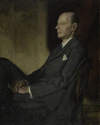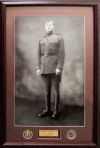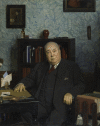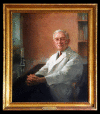Blood and war
Abstract
In 1894 Ulsterman and pathologist Almroth Wright described the citation of blood. Twenty-one years later it was introduced into wartime and clinical practice. Harvard Medical School had a large part in providing Colonel Andrew Fullerton, later Professor of Surgery, Queen's Belfast, with the intellectual and practical help for the Allies to deploy blood on the post-Somme Western Front and in Salonika. The key investigators and clinicians were Americans and Canadians who with Fullerton and Wright instructed the Allies. The key enablers were two Harvard-trained surgeons surnamed Robertson-Oswald H. ("Robby") and L. Bruce (no relation). Physician Roger I. Lee of Harvard, surgeon George W Crile of Cleveland, Peyton Rous of the Rockefeller Institute and Richard Lewisohn of Mount Sinai Hospital, both located in the Upper East Side of New York City, played key roles.By Armistice in 1918, indirect citrated nutrient-enhanced blood transfusion was widely used by the Allies. Geoffrey Keynes was taught the techniques of blood transfusion by Dr. Benjamin Harrison Alton of Harvard at a Casualty Clearing Station near Albert at the time of the Battle of Passchendaele. Professor "Robby" Robertson, DSO, Sir Geoffrey Keynes and Sir Thomas Houston established blood banking.
Figures










References
-
- Flexner S, Flexner JT. William Henry Welch and the Heroic Age of American Medicine. New York: Viking Press; 1941. pp. 368–70.
-
- Landsteiner K. Ueber Agglutinationserscheinungen normalen menschlichen Blutes. Wien Klin Wchnsch. 1901;14:1132–4. - PubMed
-
- Karl Landsteiner. Nobel Lectures, Physiology or Medicine 1922-1941. Amsterdam: Elsevier Publishing; 1965. The Nobel Prize in Physiology or Medicine. http://nobelprize.org/nobelprizes/medicine/laureates/1930/landsteiner-html. (Last accessed 9 Aug. 2010)
Publication types
MeSH terms
LinkOut - more resources
Full Text Sources
Medical
